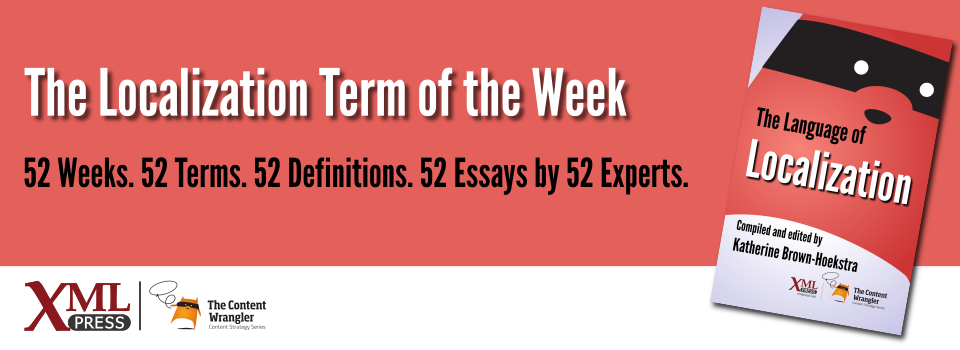Like many of you, I have frequently had to explain what localization is, usually in the context of what I do for a living. I find localization easy to explain, often using the example of getting a mobile phone adapted for other countries. Because most people own one, they can imagine why adaptation makes sense. For good measure, I add that it is not only the language, but often local laws, different technical specifications, and customs that need to be considered.
As I get fired up and start explaining the difference between localization and internationalization, eyes quickly glaze over because, like in all languages, words are not just words; they represent concepts that, in turn, often rely on the comprehension of other concepts for a clear understanding. At this point, the value of a guide like The Language of Localization becomes apparent. Like any other profession, we have developed a language of our own. We took common words that have multiple meanings and defined them in the context of localization, or if a word did not exist, we invented one.
This sounds a lot easier than it is because there is no central authority to do that work, no arbiter to clarify meaning. Instead, it was, and continues to be, a crowd-sourced exercise with no central repository to use for reference.
Enter Kit Hoekstra-Brown, Scott Abel, Richard Hamilton, and their merry band of subject matter experts. For the benefit of localization professionals, global marketers, and technical communicators, they compiled a “must-know” list of terms that define the common language of our industry.
I appreciate how thoroughly they tackled the task. Not only are the terms defined clearly and their importance explained, but in the essay, they explain why business professionals need to have this information.
Which brings to mind a case when poor communication and a lack of clearly defined terms cost a pretty penny. In 1999, NASA lost a US$125 million Mars orbiter because NASA was using metric measurements, while Lockheed Martin, the contractor, relied on English Imperial units.[1].
We can do better. Having clarity in the way we communicate about the many tasks and processes that make up life in localization benefits every aspect of our work. It helps us achieve good quality, speeds up time to market, and improves the cost effectiveness of our collaboration. Everyone benefits, from the translator to the project managers to, maybe most important of all, the end users.
We all owe thanks to the people behind this project for helping to develop a shared language for a still young industry. Along with other standards, it is a critical tool in meeting the challenges of an ever faster-paced, globalized world.
As new terms appear and existing ones change their meaning, I hope that the authors will issue new editions of this excellent guide.
Well done, and thank you on behalf of the whole localization community.
Ulrich Henes
Madison, Wisconsin, USA
About Ulrich Henes
Ulrich Henes is the founder and president of The Localization Institute, a Madison Wisconsin-based consulting and event organizing company, and is co-producer of the LocWorld conferences. From his earliest years, Ulrich has been fascinated by language, cultural differences, and global business. He spent the first decade of his career organizing international campaigns against the arms race and apartheid and promoting global social justice. For the past 25 years Ulrich has channeled his passion for all things global into promoting awareness and respect for differences among people, countries, and languages in the international business community.
[1] Grossman, Lisa. Wired magazine. “Metric Math Mistake Muffed Mars Meteorology Mission.” https://tlolink.com/2xBXppE
